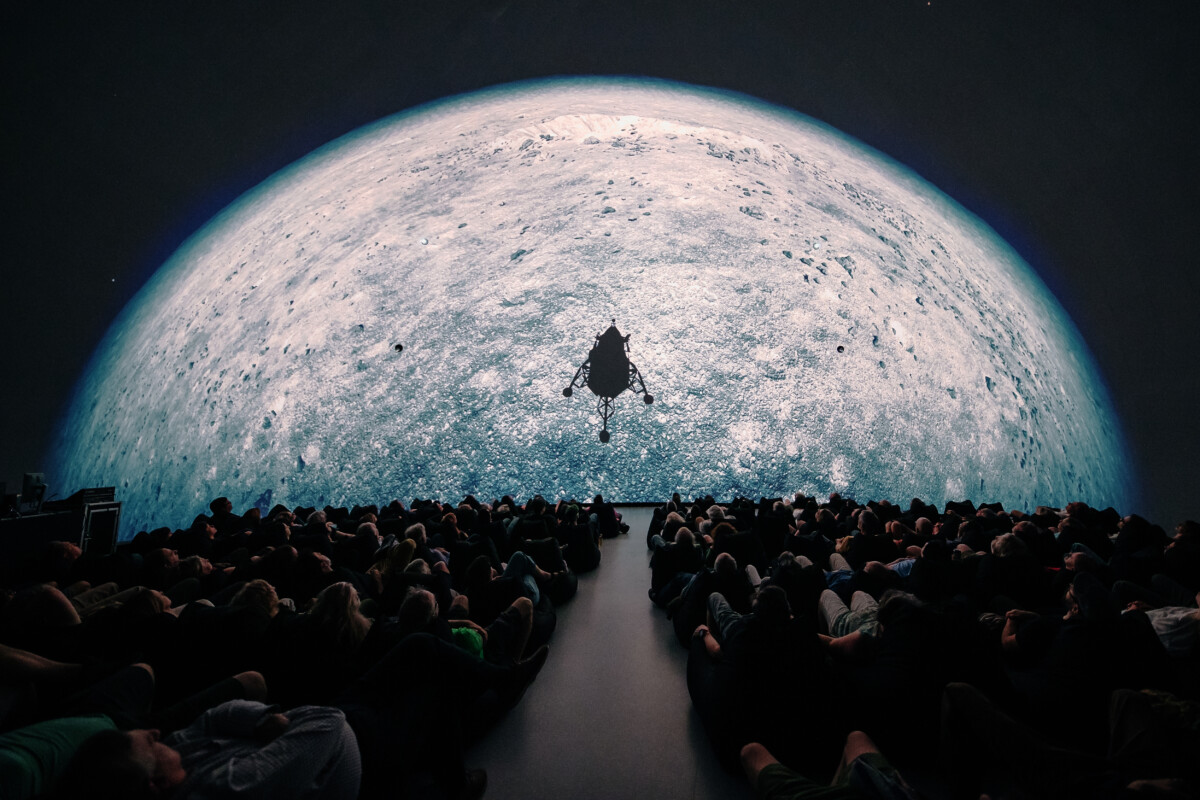Pink Floyd’s 1973 album was made into an immersive experience in Montreal.
The 50th anniversary of Pink Floyd’s The Dark Side of the Moon was prominently highlighted, to say the least. Montrealers had the chance to experience a grand audiovisual experience in the Society for Arts and Technology’s (SAT) Satosphère, which is one of only 100 domes and planetariums in the whole world presenting it. The company Hubblo, a local initiative that aims “to address the explosive worldwide production of immersive and interactive experiences,” was also in charge of putting the project together. The projection took place most evenings, welcoming the first wave of audiences since August and soon on Oct. 27.
With its 18 meters in diameter, 13 meters in height, eight video projectors and 157 speakers, the SAT’s dome exclusive show was indeed mesmerizing. As stated on the event’s page, the band warmly welcomes the concept of “juxtapos[ing] the album’s musical framework with striking images of space.” The goal was to accompany each track of the 43-minute-long album with a futuristic visual component and as “a nod to Pink Floyd’s retro visual iconography.”
Not only did the show make me hear the album as if it was the first time but it was indeed planned to remaster the album in surround sound for this 360-degree environment. The SAT in Montreal also describes the aim to offer “an unparalleled 360-degree experience to plunge into the heart of Pink Floyd’s sonic and visual universe,” especially after the dome closed its doors for several months due to renovation and equipment installation. Statera Experience shares that “NSC Creative studio handled the visual production of the show, working closely with Aubrey Powell, a longtime Pink Floyd creative accomplice at Hipgnosis.”
Since the seats in the Satosphère dome are unnumbered, the first thing to do was to choose a spot among the many bean bag chairs. When it started, the lights dimmed to bring focus on the first projection approaching on the dome ceiling while the intro track “Speak to Me” echoed. A futuristic pyramid in space got bigger and bigger only to introduce the many other visual elements that constituted a cohesive and refreshing sight. Staggering images of the solar system were at the core of the show, from the moon—hinting at its inclusion in the album title—to the different planets and much more. Distinct themes of each song were exploited such as elements of money and consumerism with the track “Money” playing. Each sight presented a temporal and spatial experience, adding depth to the lyrics and sounds used in the production of the album.
The colour theme of the projections was both dark and space-themed with pops of vivid colour to immerse the viewer. The rainbow from the album cover was thus used to provide enhanced visual stimulation. As for the audio quality and experience, it was overall balanced and synced perfectly with what was portrayed on the ceiling.
My personal outtake was definitely how smooth the transitions between each projection played out. The shifts between songs merged smoothly and creatively with the graphic theme of the following track on the album. I especially loved some of the cohesive elements that kept coming back throughout the show, such as a visual of an astronaut with Earth mirrored on the helmet. The imagery was striking due to its crisp quality and lying down while seeing our planet through someone else’s eyes was dazzling in the best way. A Thursday evening during the fall break was definitely a good moment to be a little existential while being sonically embraced throughout a stimulating experience and celebration.
